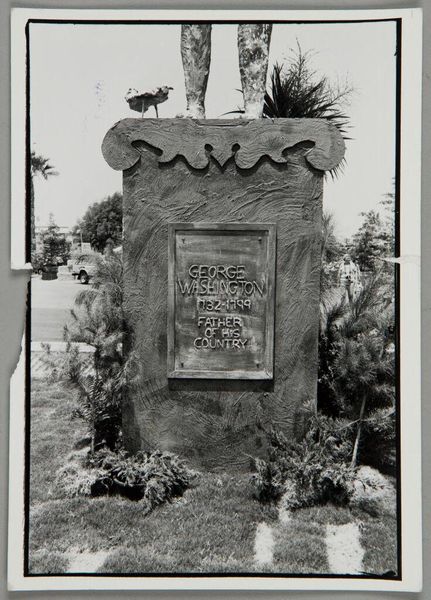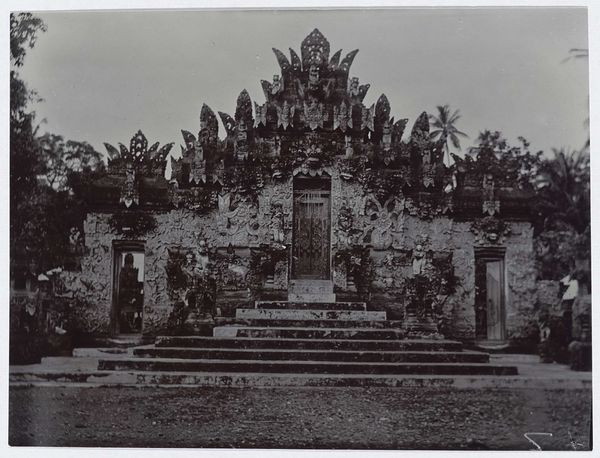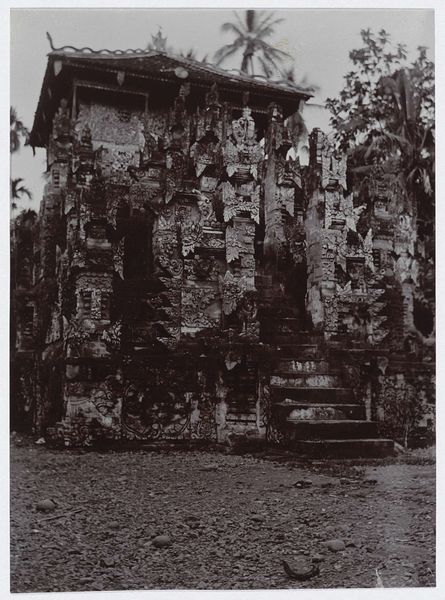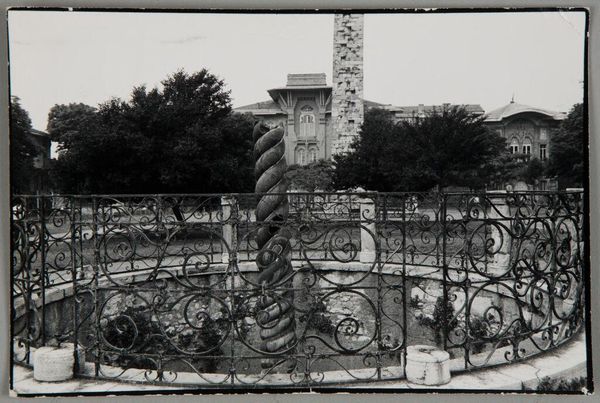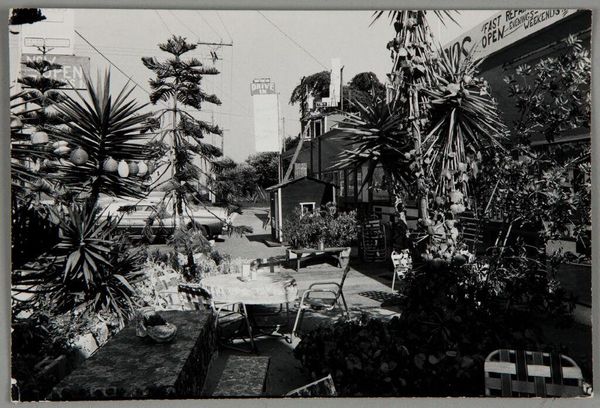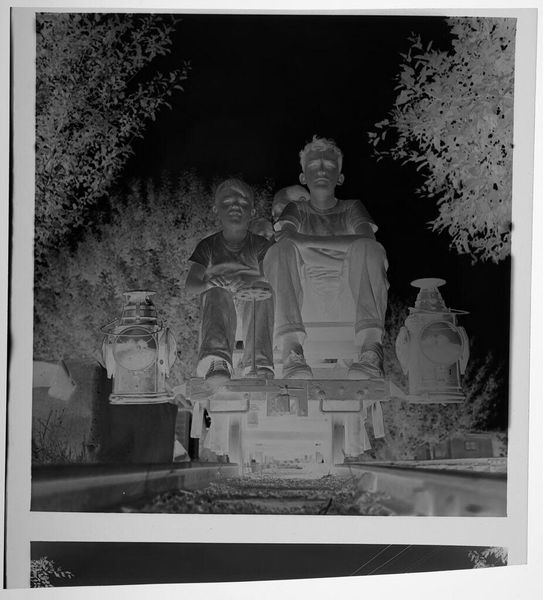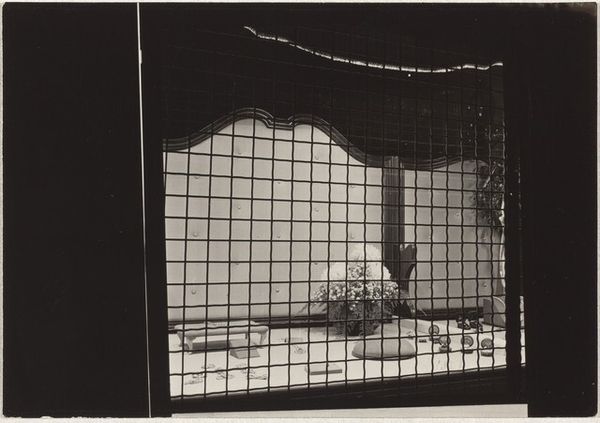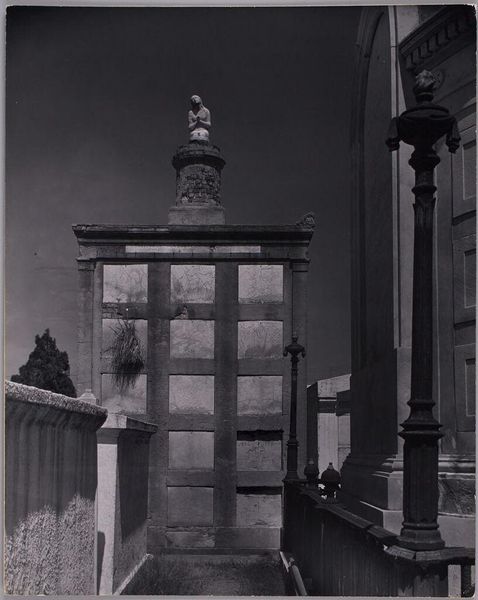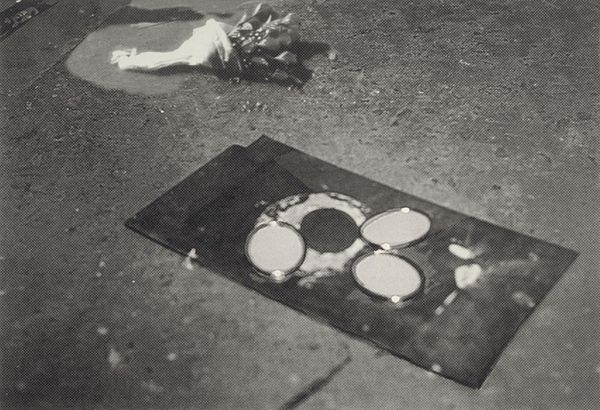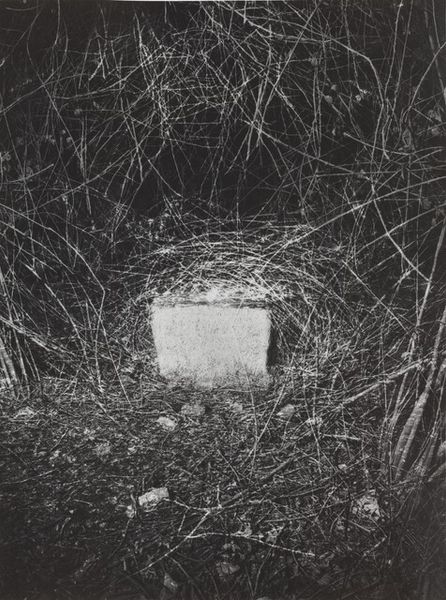
photography, gelatin-silver-print
#
contemporary
#
sculpture
#
landscape
#
street-photography
#
photography
#
black and white
#
gelatin-silver-print
#
monochrome
#
monochrome
Dimensions: image: 18.5 × 28 cm (7 5/16 × 11 in.) sheet: 24.5 × 35 cm (9 5/8 × 13 3/4 in.)
Copyright: National Gallery of Art: CC0 1.0
Curator: Let's look at Ed Grazda’s photograph, "Chiantla, Guatemala," taken in 1975. It's a gelatin silver print depicting a cemetery wall. Editor: It immediately strikes me as a carefully constructed composition, even with its seemingly random placement of objects. The black and white tonality emphasizes the textural contrasts between the stone, flowers, and foliage. Curator: Indeed. The cultural symbolism is rich. The flowers, predominantly arranged into wreaths, signal remembrance and cyclical return. In Guatemalan culture, cemeteries aren't just places of mourning; they are spaces for celebration, where connections with ancestors are reaffirmed. Editor: The formal arrangement reinforces that sense of connection. Each burial niche is distinct, almost like an individual portrait within a larger collective framework. I see recurring geometric patterns–rectangles and circles–created by the tombstones and wreaths. Curator: Notice, too, how many niches contain crosses, powerful signifiers of faith and hope but also potentially indicative of specific beliefs or affiliations within the community. The varying levels of adornment--some with elaborate wreaths, others with simple arrangements--reflect different emotional relationships and social standing. Editor: It’s a complex, layered composition. The varying tones create an optical experience where the background is just as prominent as the midground and the foreground. Is that due to the silver gelatin printing process, or something in the original composition? Curator: Perhaps both. Grazda, as a street photographer, likely saw these objects not just as arrangements, but as visual fragments of daily existence imbued with sacred significance, each contributing to a broader visual narrative of grief, memory, and continued cultural practice. The choice to present it in stark monochrome strips it of immediate sentimentality, asking the viewer to contemplate the deeper layers of symbolism. Editor: It does create that distancing effect, a sort of objective framework. Despite the photograph depicting a cemetery and a seemingly solemn topic, its sharp contrasts and varied textures convey a strange vitality. Curator: Exactly. This photograph is more than a record; it's a poignant reflection on the cyclical nature of life and the enduring power of cultural traditions in shaping our perception of death. Editor: I agree. The formal qualities are striking. It gives the viewer a sense of both detachment and reverence for life as expressed through death.
Comments
No comments
Be the first to comment and join the conversation on the ultimate creative platform.
